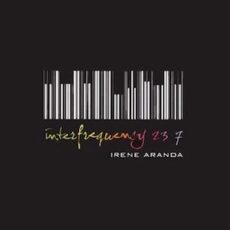

GEORGE COLLIGAN QUARTET
George Colligan Quartet Featuring Devasate’ Phelps
Jazz pianist and Portland State University Professor, George Colligan has made a name for himself not only as an impressive, world-class performer, but also as a mentor and collaborator with younger musicians on the Portland jazz scene. George will be hosting an intimate evening at The 1905 with some of the most talented, young musicians in Portland.
He will be joined by versatile drummer and band leader, Cory Limuaco, virtuoso bassist, Robert Rodriguez, and extraordinary pianist and promising vocalist, Devasate’ Phelps.
More Posts: adventure,bandleader,club,genius,history,instrumental,music,piano,preserving,travel,vocal

Daily Dose Of Jazz…
Graeme Emerson Bell was born on September 7, 1914 in Richmond, Victoria, Australia. His father performed musical comedy and music hall on the early Australian Broadcasting Commission radio, and his mother was a contralto recitalist in Dame Nellie Melba’s company.
From the age of 12, Bell had weekly piano lessons in classical music by Jesse Stewart Young, a contemporary of his mother. He attended Scotch College in 1929 and 1930, leaving school at sixteen during the Great Depression and worked for T & G Insurance as a clerk for over nine years, and had a stint as a farm hand. He paid for his own piano lessons for two further years, and in later years he supplemented his income by teaching.
Graeme was converted to jazz by Roger, a drummer, who later became a singer and trumpete. Roger would play 78s on the family’s record player, including Fats Waller’s Handful of Keys. It was in 1935 that he started playing jazz with Roger at Melbourne dances and clubs. By 1941 he fronted his own Graeme Bell Jazz Gang. Unfit for active duty during World War II, he entertained Australian troops, including travelling to Mackay, Queensland in early 1943. After his return to Melbourne, Bell became a full-time professional with the Dixieland Jazz Band.
His first recordings were for William Miller’s Ampersand label in 1943, after which he became leader of the house band for the Eureka Youth League and established a cabaret, the Uptown Club, in 1946. After playing at the inaugural Australian Jazz Convention, Bell’s band was renamed Australian Jazz Band and became the first such band to tour Europe.
The Australian Jazz Band travelled to the United Kingdom in early 1948 and Graeme started the Leicester Square Jazz Club, playing music specifically for dancing, which continued into the 1950s. Many future and contemporary bands were to be influenced by his music. During the early 1950s he periodically returned to UK and Europe to perform, and in 1951 they appeared at Oxford Town Hall with the performance ultimately released as Big Bill Broonzy in Concert with Graeme Bell & his Australian Jazz Band.
Upon returning to Australia he settled in Sydney and became one of the leading promoters of jazz in the country, bringing American performers such as trumpeter Rex Stewart. He played commercial music and taught piano to supplement his income.
Pianist Graeme Bell, wrote Graeme Bell, Australian Jazzman, was inducted into the Australian Recording Industry Association Hall of Fame in 1997 and made over 1,500 recordings, died on June 13, 2012 after suffering from a stroke at 97.
More Posts: bandleader,history,instrumental,jazz,music,piano

Daily Dose Of Jazz…
Samuel Quinto Feitosa was born Samuel Quinto Feitosa on September 5, 1973 in Belém, Pará, but grew up in Salvador, Bahia. From the age of seven, he developed his interest in piano from the gospel music performed in the Baptist Church during his childhood. An autodidact, he played at home without teachers, learning harmony, reading and writing music and orchestration, musical composition, arranging for the church choir, and started playing as a pianist at age 12.
Releasing his debut CD Latin Jazz Thrill in 2007 in Portugal, with his trio, Samuel followed it with Salsa ‘n Jazz, containing eight original compositions and a standard the following year. After a European tour he established the first course of Latin Jazz at Jazz School North, Porto. He also became the artistic director of one of the most traditional jazz Portuguese clubs, B-flat.
He returned to Brazil in 2012 to take the position of Music Minister at the Second Baptist Church in Mossoro, Rio Grande do Norte. During this period he wrote symphonies, opera, minuets and christmas rratorio for choir.
In 2015 he becames the newest piano representative of Fritz Dobbert pianos and returned to jazz performance. He published his first book called Improvisar é muito fácil in 2016. Quinto is a member of several organizations including the International Council for Traditional Music, the American Council of Piano Performers, the National Federation of Music Clubs and has a collaborative relationship with UNESCO.
Pianist Samuel Quinto, who is a Fellow of the Royal Society of Arts in London, continues to perform, compose and educate.
More Posts: bandleader,composer,history,instrumental,jazz,music,piano

Daily Dose Of Jazz…
Irene Aranda was born in Jaén, Andalucía, Spain on September 2, 1980 and started to play piano at age seven under the guidance of her maternal grandparents. She graduated from the Conservatory of Music in Granada and complimented her classical training by attending piano performance and composition classes with Gerardo López Laguna, Guillermo González, Fernando Puchol, Pilar Bilbao, Antonio J. Flores and Javier Darías, among the most notable.
She was self-taught in jazz and free improvisation, she later studied with Peter Zack, Eduard Simons, Chano Domínguez, Nikky Illes, Mike Ph. Mosman, Greg Hopkins, David Pastor, Jordi Farrés Tomás, Pete Churchill, Perico Sambeat, Tony Reedus, etc.
Her first work as a leader, Interfrequency 23 7, brought her great critical acclaim which led her to participate in numerous festivals. Since her debut release in 2007 she has released six more albums.
Freed from stereotypes, Irene has gone on to perform and collaborate with Paolo Fresu, Toots Thielemans, Maria Pia De Vito, Baldo Martínez and Bojan Z among others. Aranda has played with Don Malfon, Brandon López, Markus Breuss, Johannes Nästestjö, Samuel Blasser, Germán Díaz, Agustí Fernández, Joanna Mattrey, Lucía Martínez, Javier Carmona, Núria Andorrà, Marc Egea and numerous others.
Pianist, improviser, composer Irene Aranda continues to swim against the stream of pianists with her creativity and exploration in her music.
More Posts: bandleader,composer,history,improviser,instrumental,jazz,music,piano


